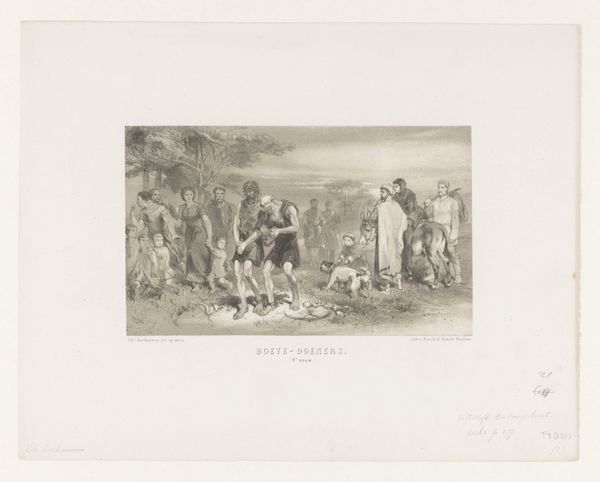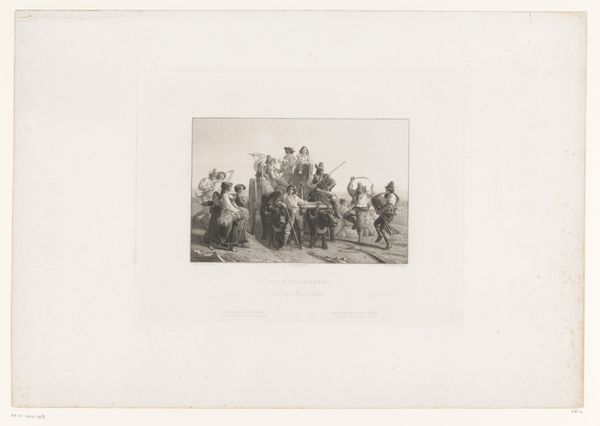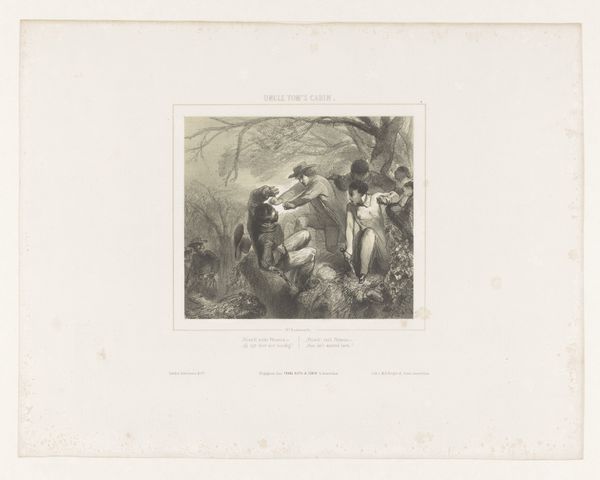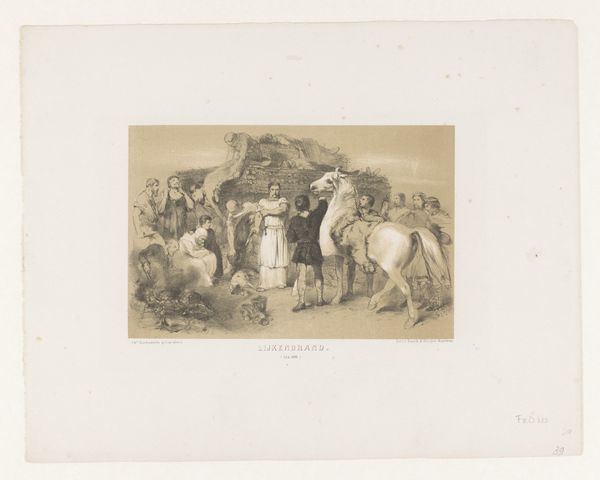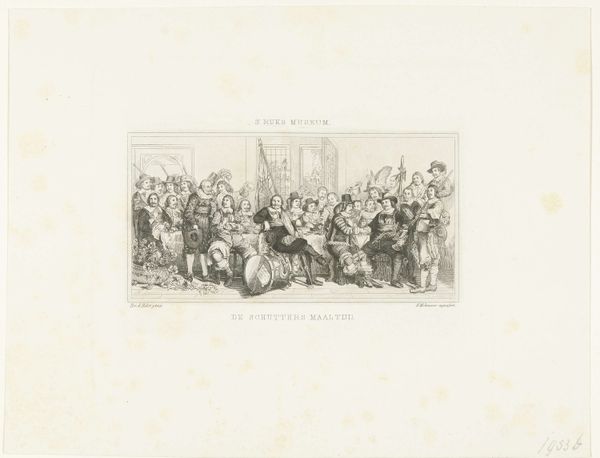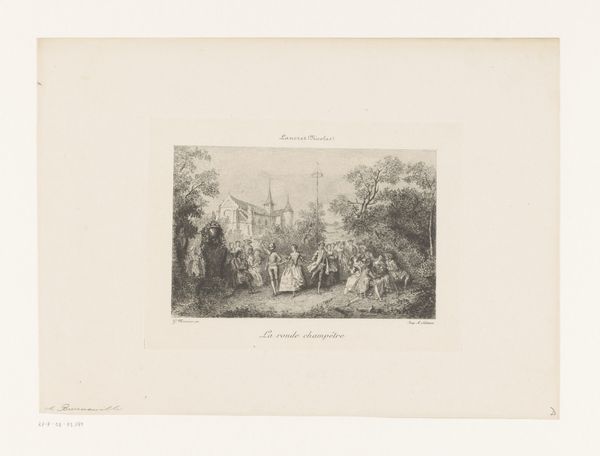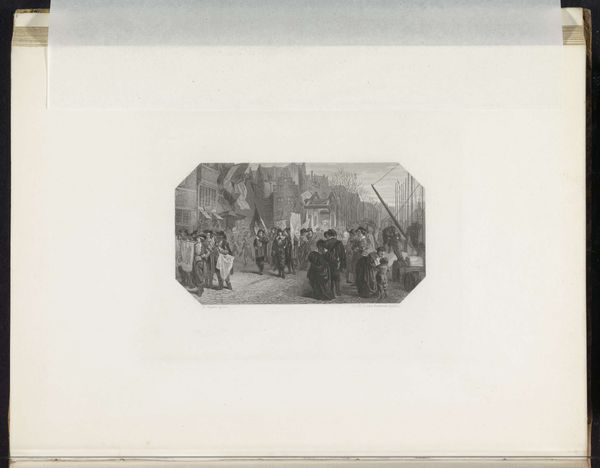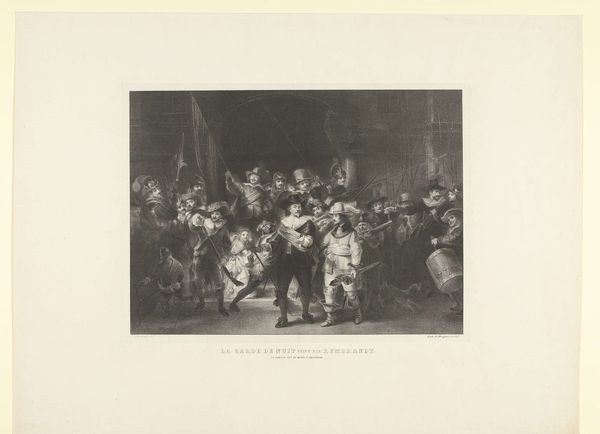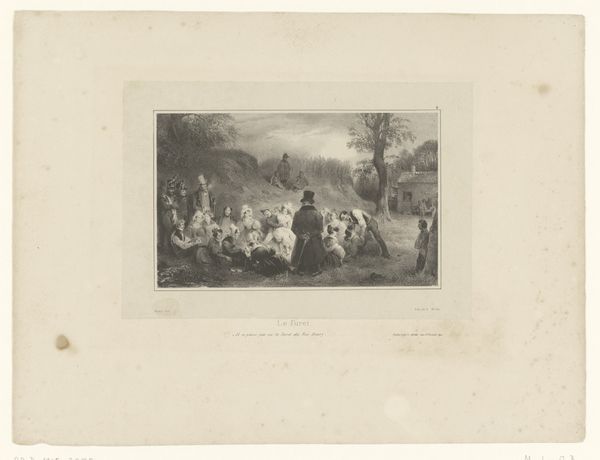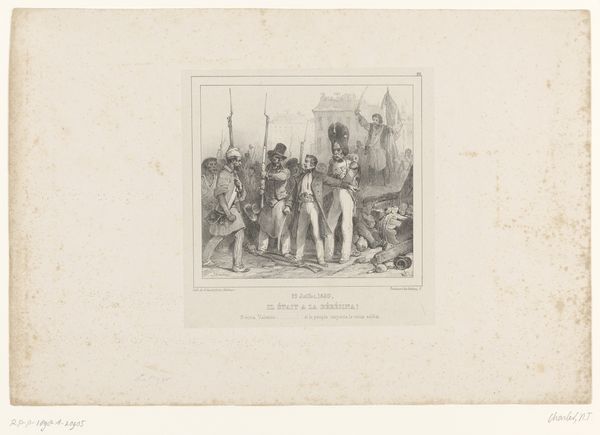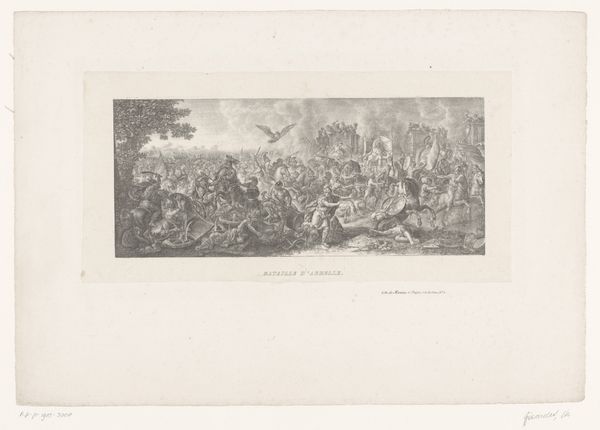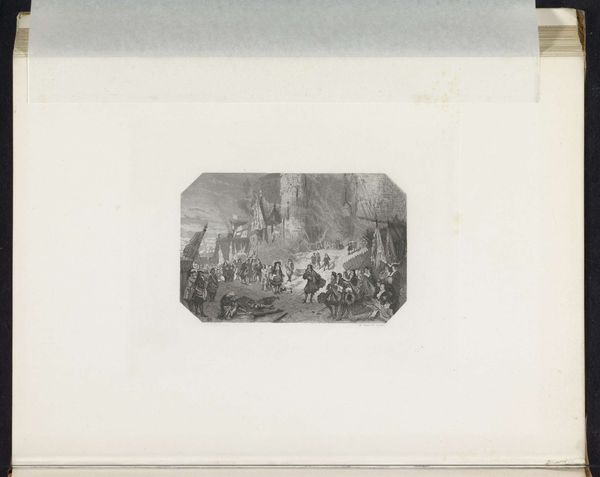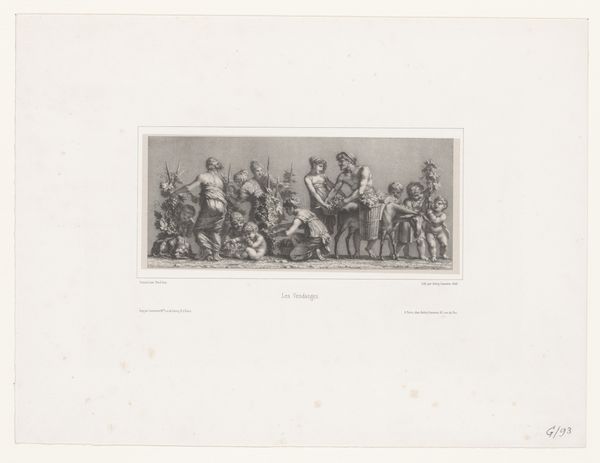
print, engraving
#
narrative-art
# print
#
genre-painting
#
engraving
#
realism
Dimensions: height 290 mm, width 375 mm
Copyright: Rijks Museum: Open Domain
Curator: Before us we have "Boerenbruiloft," also known as "Peasant Wedding," a print by Emrik & Binger created between 1857 and 1864. It’s an engraving, depicting a scene of everyday life. Editor: It’s lively. There’s so much happening in this image. I’m immediately struck by the crowd—a flurry of activity centered around dancing figures. It’s quite dynamic, even in monochrome. Curator: The print engages with genre painting, capturing a moment of social life, but beyond just subject matter, what strikes me are the processes of production: the work behind the engraving, the plates used, the labor involved. Reproducing and disseminating such imagery served a very specific function for its wide audience at the time. Editor: Absolutely. It's interesting to consider how the art market functioned and the role of printmakers, offering insight into the cultural life of the period. How images were circulated is itself a form of politics and the distribution speaks to the artwork's value in that culture. This print speaks volumes about that society's perception of itself. Curator: These depictions of rural life gain significance as the Industrial Revolution dramatically changed work practices and social identities. This artwork reveals how processes like engraving—laborious, replicable, and tied to the printing press—interacted with society's perception of class. Did art validate hierarchy or was it attempting to elevate and immortalize scenes from a culture in danger of disappearing? Editor: It seems to play with both elevation and observation. I appreciate how it pulls apart established conceptions. It's a complex work for its time, given its ability to allow for differing perspectives. Curator: Exactly! These everyday moments of dance and feasting—carefully reproduced for mass consumption—give the past tangible form, sparking dialogues around art, production, and how cultures are built and memorialized. Editor: It gives us space to pause and contemplate this narrative, its composition, and historical impact, which, I think, deepens our own engagement with these themes and times.
Comments
No comments
Be the first to comment and join the conversation on the ultimate creative platform.
